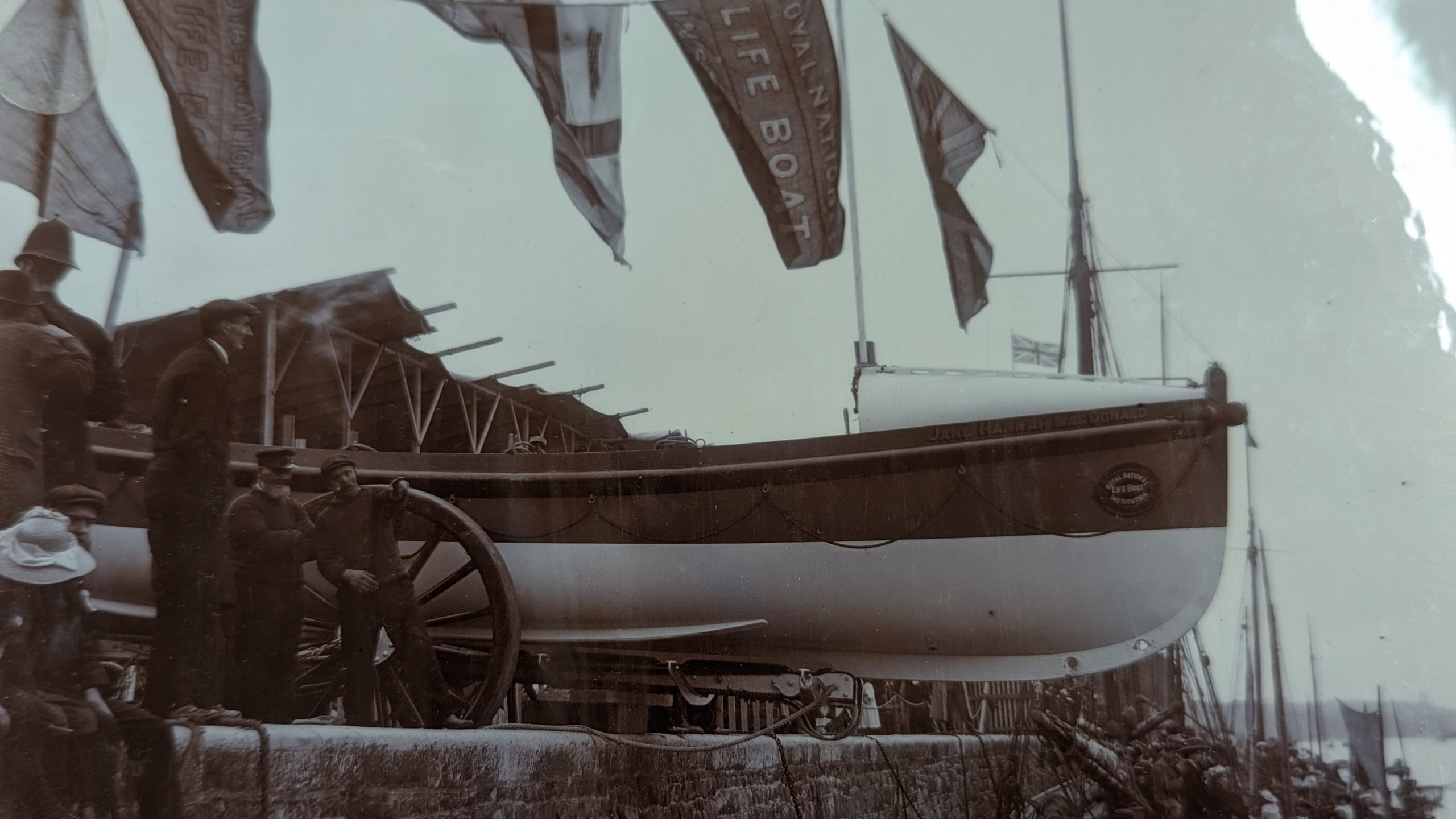
This week I was kindly invited to visit the Appledore Lifeboat house and meet the crew on one of their training evenings. It was a fascinating and inspiring visit for which I extend my thanks to everyone at the station. They were interested in the work being carried out to renovate the Hannah Jane Macdonald III and had found some old photographs of her. A discussion of the ‘then’ and ‘now’ comparison made for some thought provoking observations.
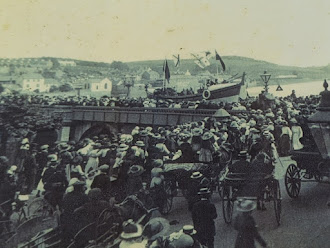
When Jane Hannah Macdonald III arrived from London there was a delay before the boat could be launched because as she arrived, King Edward VII died, and no celebration could take place during the period of mourning that followed. However, the bunting came out for the launch day when it finally arrived and photos show huge crowds gathered, as the boat was tipped off the quay into the river.
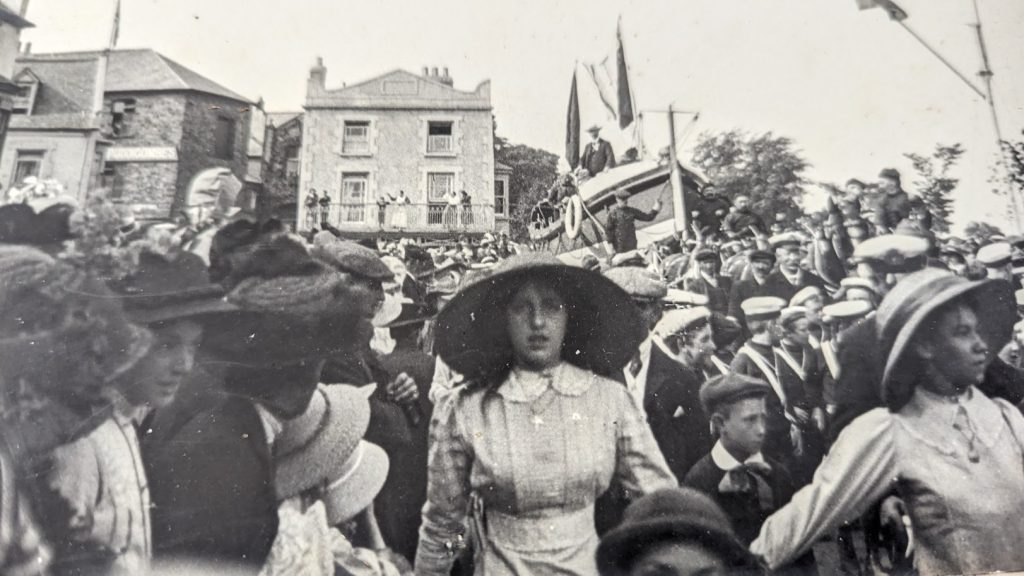
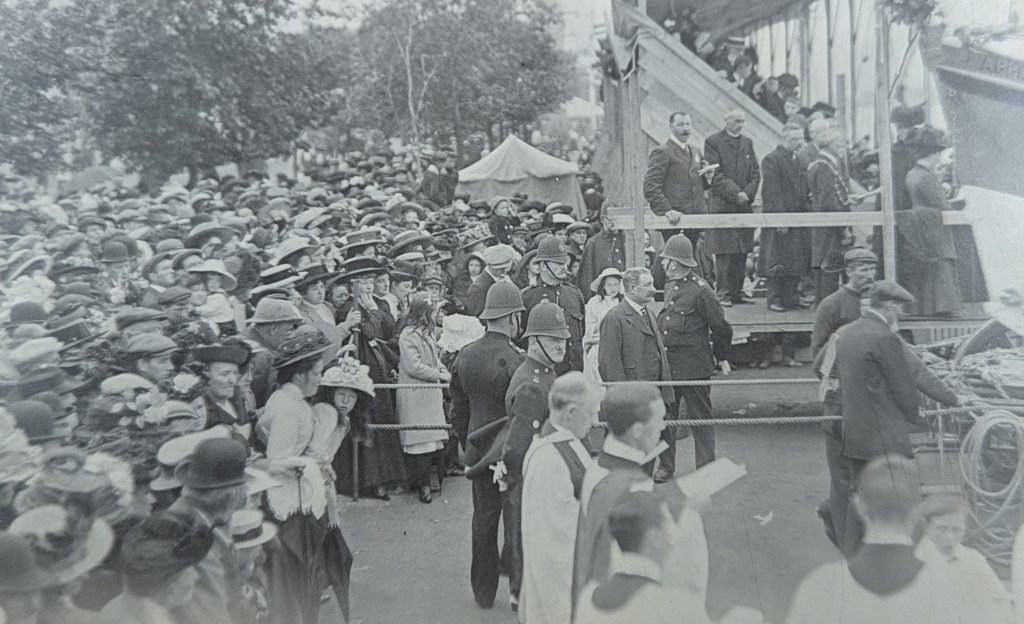
These photos were found by the current crew at the RNLI station.
The launching of a new lifeboat is clearly a whole community event and an excuse to dress up. Has so much changed between now and then? From my visit to the Appledore Station, I would say not really – the running of the lifeboat is still a community commitment, and although technology means the lifeboats themselves have obvious differences, the level of effort, complete dedication and bravery of its crews remain exactly the same – and most of us still like a good excuse to dress up!
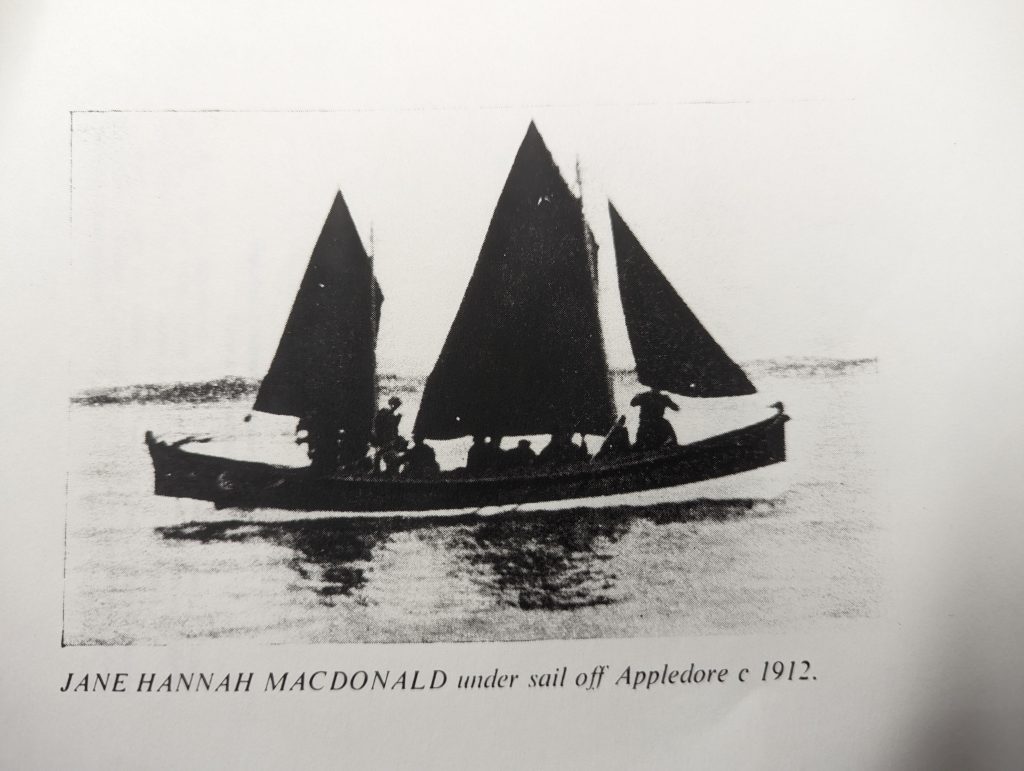
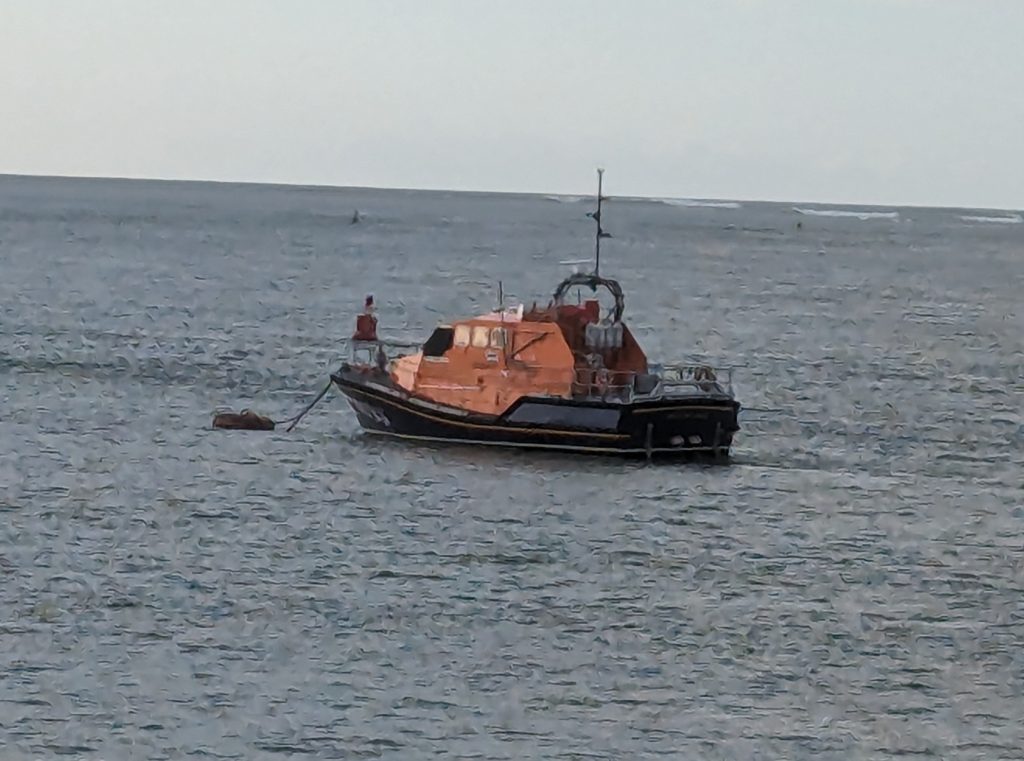
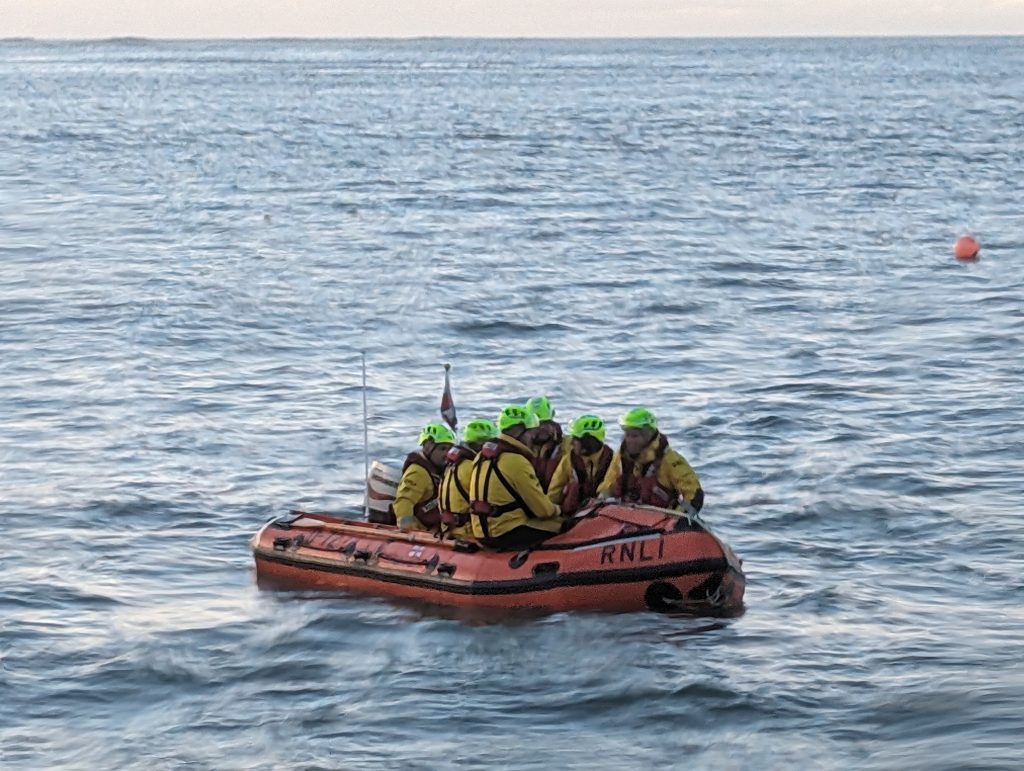
JHM III is an example of an early Self-Righting lifeboat, its two steel drop keels and air pockets under the feet of the oars’ men helped to re-right the boat when it capsized in storms. The current day off-shore lifeboat at Appledore, is a Tamar-class all-weather boat. It is also self-righting but these days the hull and deck are bonded together with an enclosed cabin so if it capsizes, all crew and the equipment it carries stays safe and dry.
JHM III is a ‘Pulling & Sailing’ ketch rig of standing lugsails Lifeboat. Her construction was mahogany on oak planks with calico between, corked in double diagonal with two steel drop keels, 10 oars and weighing just short of 4 tons. The deck was open with a covered area at the bow and stern to huddle rescued sailors on the return journey to shore and offer them a degree of shelter. The current off-shore boat is made from composite materials and powered by two Caterpillar C18 diesel engines, equipped with fixed pitch 5-blade propellors each producing 1,000 horsepower.
JHM III was launched by horse and cart. Local farmers would rush to harness their horses, responding to the sound of the siren alerting a shout out. The wives would carry the crew out to the lifeboat to keep their feet from getting wet (pre Wellington boot days!). The Tamar can be launched down a slip but lies afloat and is reached by a tender launched by tractor. The crew today wear thermal underwear and dry suits with integral waterproof steel toe-capped boots – and the crew are men and women. The maroon is no longer sounded, but RNLI crew are alerted by a pager.
On March 28th, 1918, JHMIII launched into towering waves and a SW gale force wind, to rescue the crew aboard a coal cargo ship, a schooner, Valiant, from Belfast. They managed to come alongside the vessel and despite the rolling waves crashing them against the side of the Valiant, they managed to take the crew of 4 off the stricken vessel. The waves and wind however were so strong that they could not get back into Appledore and returned to Clovelly and sheltered there until the seas were calmer. 76 years later, on another stormy March evening (31st) 1994 Coxswain Michael Bowden led his team out into a strong gale and very steep seas to assist in the rescue of the crew of a fishing vessel Torridge Warrior which had suffered engine failure close to the Bideford Bar Buoy.
JMH III with sails and oars, weighing 4 tons, farmers’ horses and cart to launch, a flask of brandy as medical assistance onboard, and a rescue initiated by lights piecing through dark nights to ask for help, saved 23 lives between 31st August 1910 to November 1922. With their modern technology and expertly trained crew the Appledore lifeboat attended 88 shouts in just one year.
Different boats, different times but courage threads through the core of the RNLI crew through time.